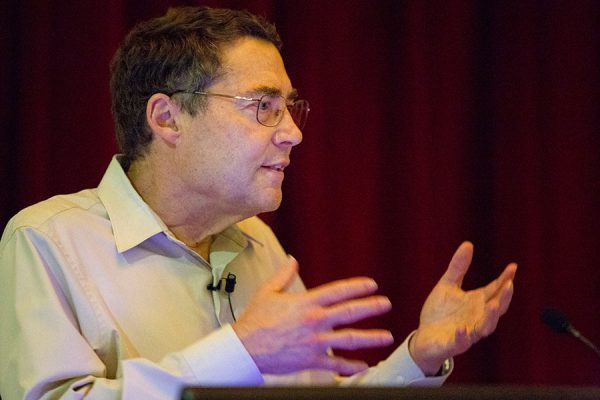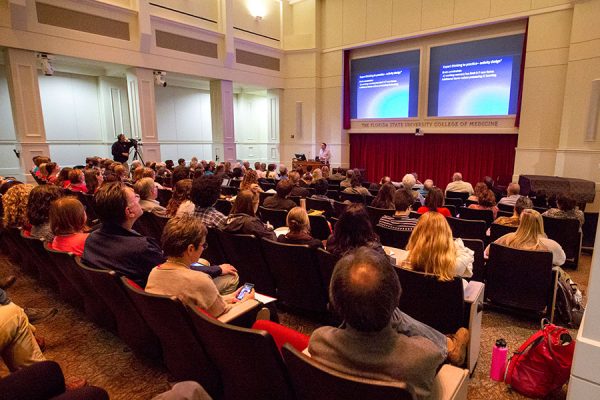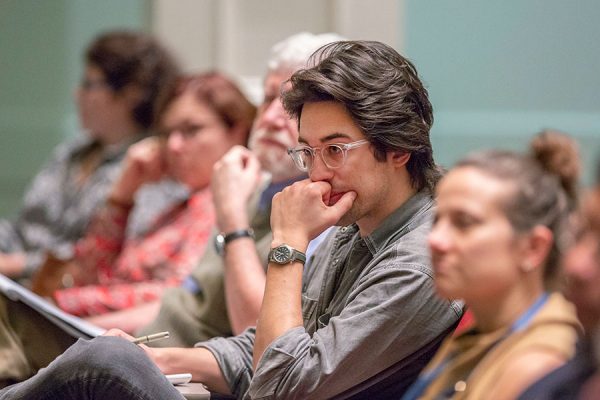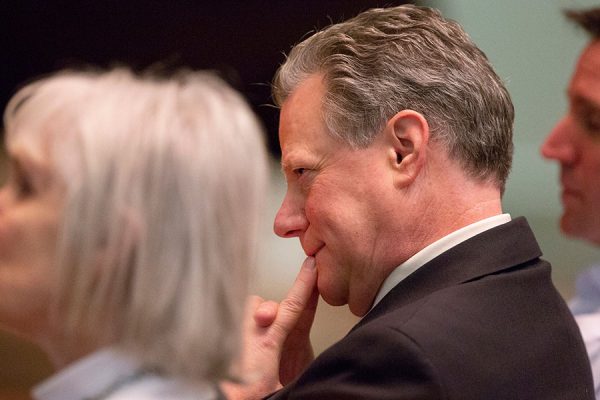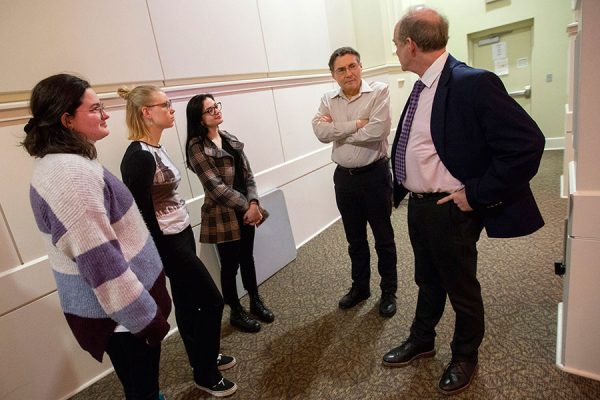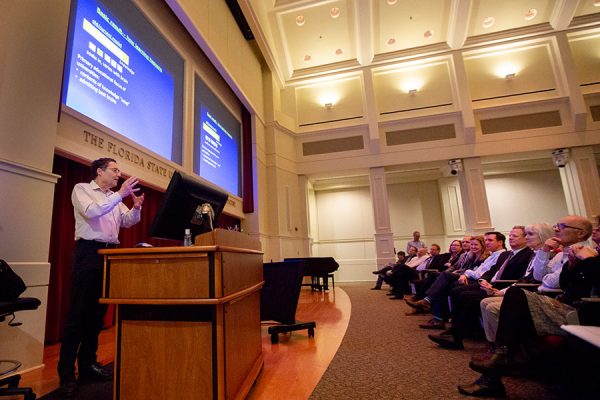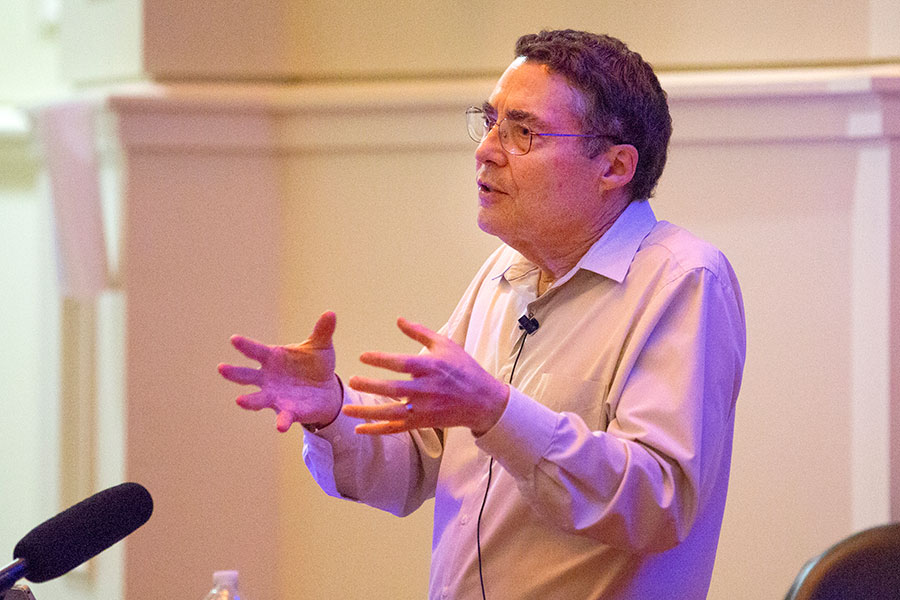
Florida State University hosted Nobel laureate Carl Wieman, a renowned physicist and educator, Thursday, Feb. 14, to discuss his research-based approach to science education and how new practices can provide more effective learning for college-level science students.
The College of Medicine Durell Peaden Auditorium was nearly standing room only as Wieman presented his lecture, “Taking a Scientific Approach to Science Education,” to FSU faculty, staff and students.
“I got into this after working with graduate students,” Wieman said. “I came to see a pattern that really puzzled me. Consistently, I would see these graduate students who would come into my laboratory after having many years of tremendous success in their physics courses, but in my lab trying to do physics — they were pretty clueless.”
Wieman, a professor of physics and education at Stanford University, has won an array of awards and honors for his innovative work in both fields. In 2001, Wieman won the Nobel Prize in physics, and he was named the Carnegie Foundation Professor of the Year in 2004.
Weiman’s scientific teaching method differs from traditional lecturing. It gets students more involved in the subject matter and encourages them to think like a scientist or expert in the field and engage in more decision-making.
He has been a trailblazer in the education field for more than 25 years and published more than 100 papers based on his research on improving science education.
In his talk, Wieman used an example of an experiment between two physics courses. An expert professor taught the class in a traditional lecture style and a doctoral student taught the same course using Wieman’s scientific teaching method. Those learning from the doctoral student did twice as well on the final exam.
Wieman shared best practices for effective teaching and learning under his method. He said research has shown that teaching 5 to 7 pieces of information at a time is best for learning. He also encouraged attendees to refrain from using too much jargon or even using nice pictures in their presentation of the material.
“If you have pretty pictures, that’s drawing attention to other things and that’s actually hurting the learning that takes place,” he said.
Weiman said that telling short anecdotes or jokes could also be potential barriers to learning.
“Interesting stories and jokes aren’t fundamentally wrong,” he said. “You just have to be sure they intimately connect with the nature of the discipline and learning you want to accomplish.”
In scientific teaching Wieman also encouraged attendees to make sure they revisit old material during their courses, have very clear deliverables to help guide the students’ understanding of the information and help the instructor provide timely and targeted feedback.
“Getting homework or an exam back two weeks later with a score is not useful feedback to the student,” he said.
That point was met with several snaps by the audience.
Social learning, where students discuss the subject matter among themselves was another best practice shared by the Nobel laureate.
“You trigger an additional cognitive learning process through that activity,” he said.
Wieman said social learning allows the instructor to move around the room and actually listen to what the students are saying — giving the instructor a snapshot of what is going on in the students’ brains
He closed the talk with several real-world examples of the positive outcomes of his teaching method. When teaching styles changed, student evaluations of the instructor improved and failure rates went down. Another example came from a biology class at Cornell University. Initially, underrepresented minorities were underperforming in comparison to their peers. After instructors moved to scientific teaching methods, the grade gap disappeared.
The lecture was sponsored by the FSU College of Arts and Sciences and the FSU-Teach program as part of the FSU-Teach 10-year anniversary celebration.
“I think it’s really important that he’s someone who is big in physics, he’s a Nobel laureate, and he’s saying we need to change how we approach scientific teaching,” said FSU-Teach Student Rosalie Morrissey. “I think FSU bringing him here shows we truly value education and not only that, but we value the idea that everyone should have a quality education. “




